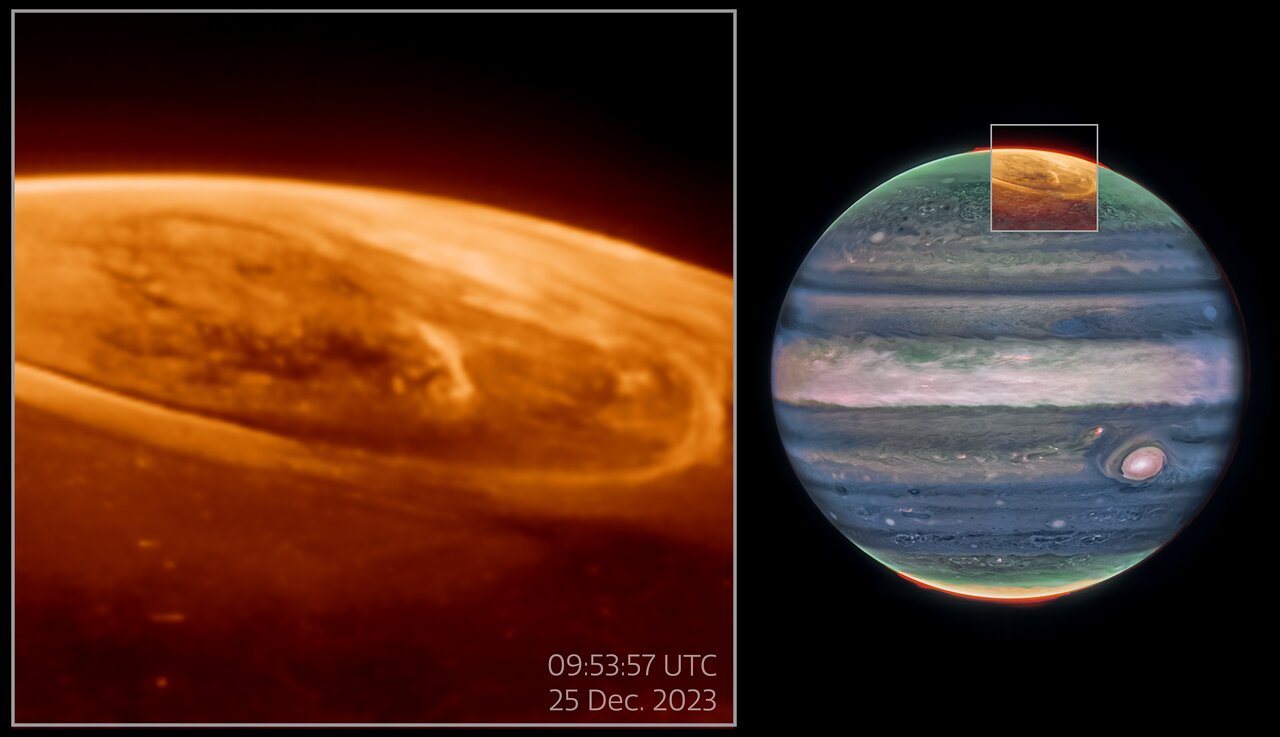Pullout of aurora observations on Jupiter
The NASA/ESA/CSA James Webb Space Telescope has captured new details of the auroras on our Solar System’s largest planet. The dancing lights observed on Jupiter are hundreds of times brighter than those seen on Earth.
These observations of Jupiter’s auroras (shown on the left of the above image) were captured with Webb’s Near-InfraRed Camera (NIRCam) on 25 December 2023 (F335M filter). Scientists found that the emission from the trihydrogen ion, known as H3+, is far more variable than previously believed. H3+ is created by the impact of high energy electrons on molecular hydrogen. Because this emission shines brightly in the infrared, Webb’s instruments are well equipped to observe it. The image on the right shows the planet Jupiter to indicate the location of the observed auroras, which was originally published in 2023 (F164N, F212N, and F360M filters).
A video of these observations can be found here.
[Image description: On the right is the planet Jupiter as seen in near-infrared light. Its clouds are dark blue and white in colour, with some red spots within the clouds, while its poles are tinged with green, yellow and red. A box over the north pole is overlain with more data in shades of orange, displaying aurorae as arcs and rings on the planet. To left, this area is shown larger in size and captioned “09:53:57 25 Dec. 2023”.]
Credit:NASA, ESA, CSA, STScI, Ricardo Hueso (UPV), Imke de Pater (UC Berkeley), Thierry Fouchet (Observatory of Paris), Leigh Fletcher (University of Leicester), Michael H. Wong (UC Berkeley), Joseph DePasquale (STScI), J. Nichols (University of Leicester), M. Zamani (ESA/Webb)
About the Image
| Id: | weic2510b | |
|---|---|---|
| Type: | Collage | |
| Release date: | 12 May 2025, 14:00 | |
| Related releases: | weic2510 | |
| Size: | 3840 x 2210 px | |


